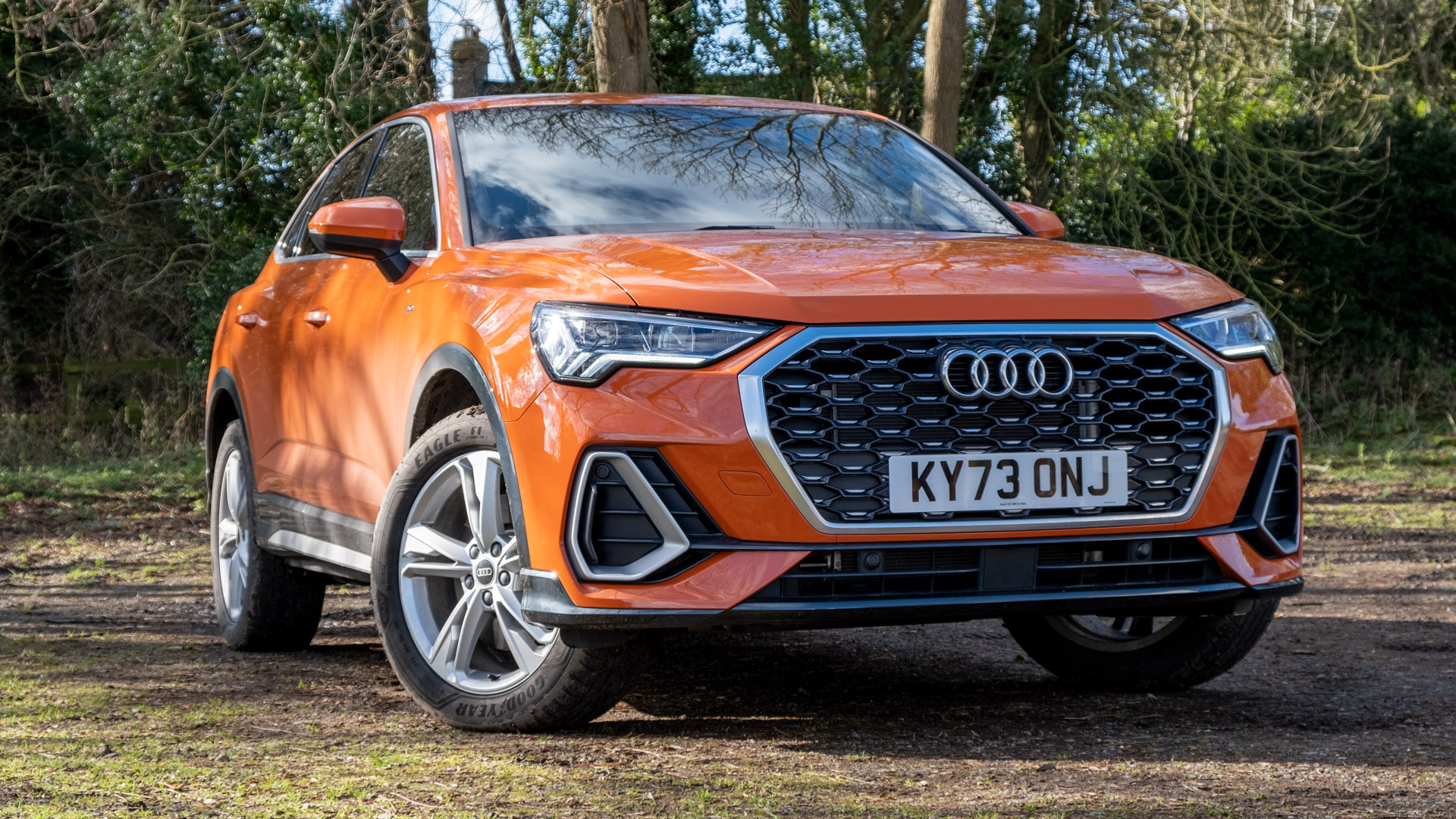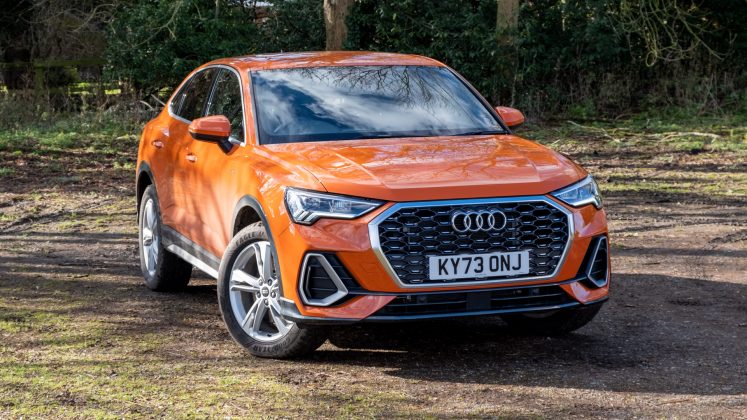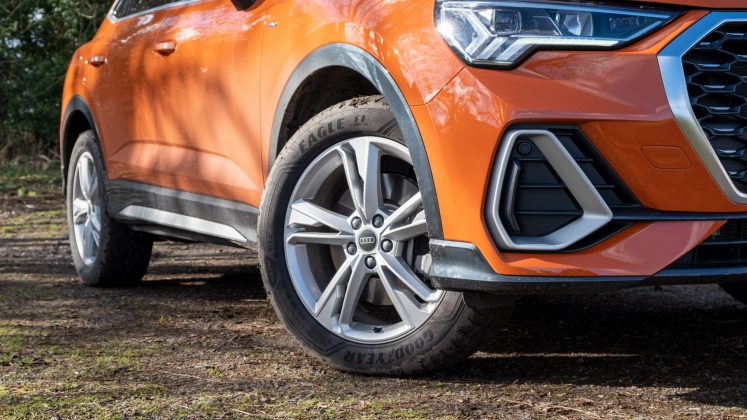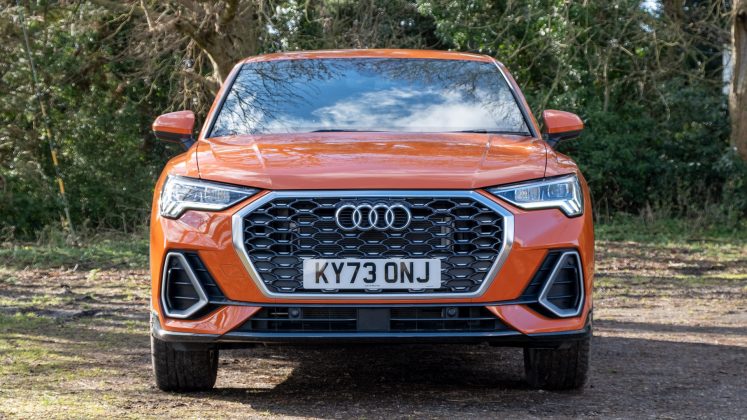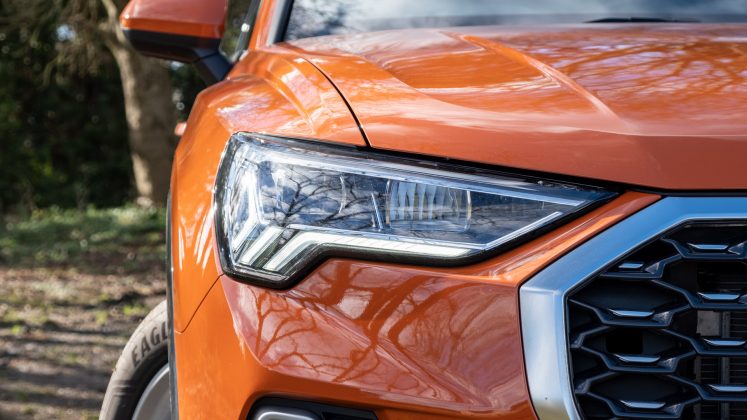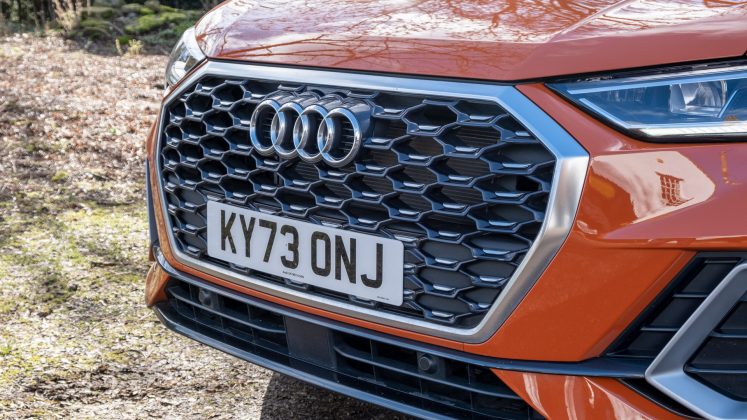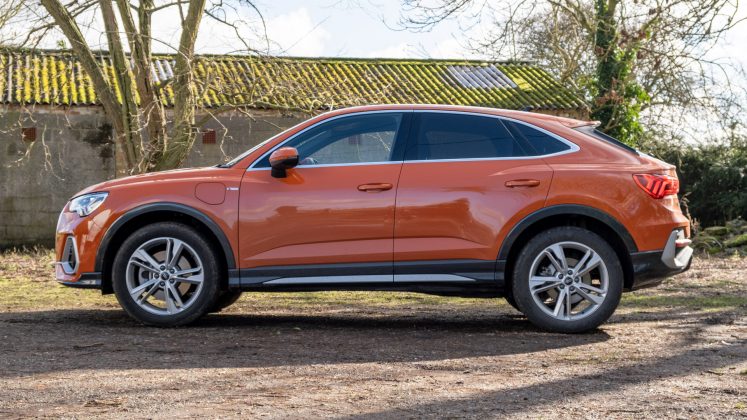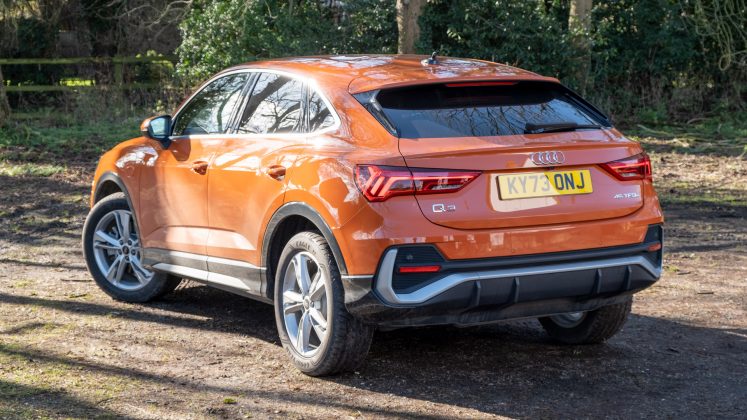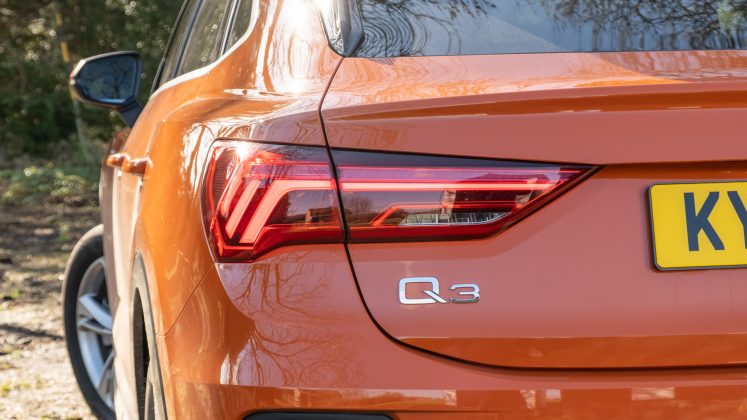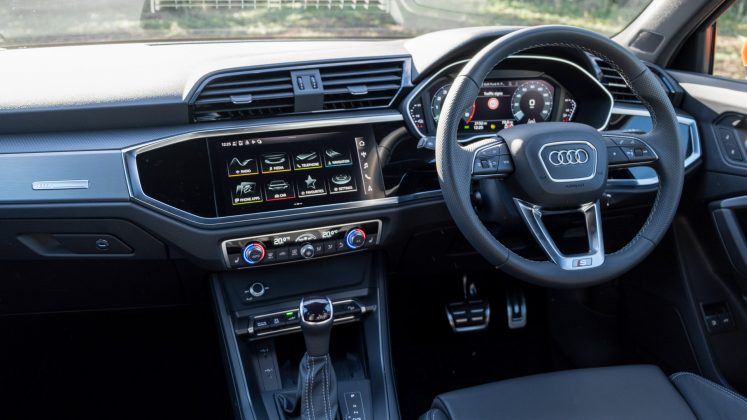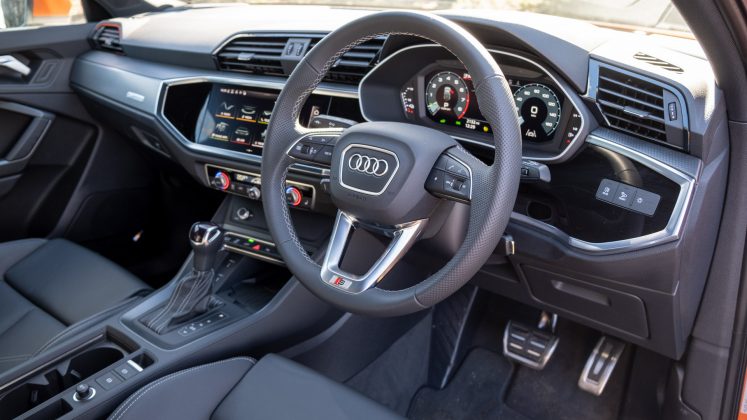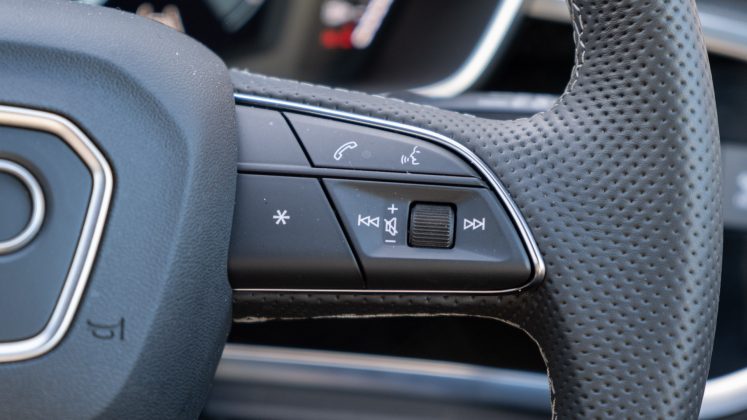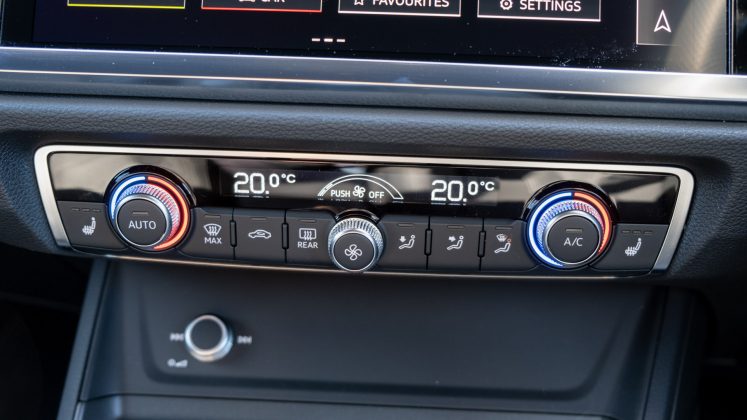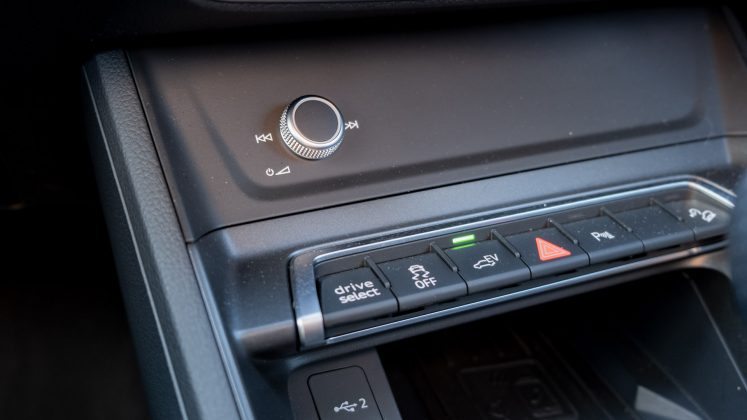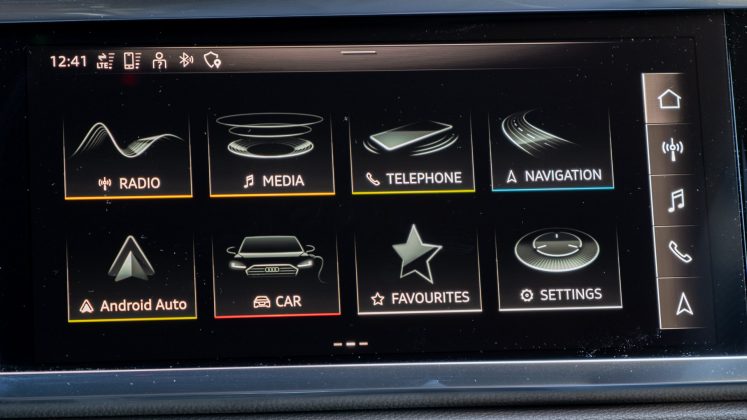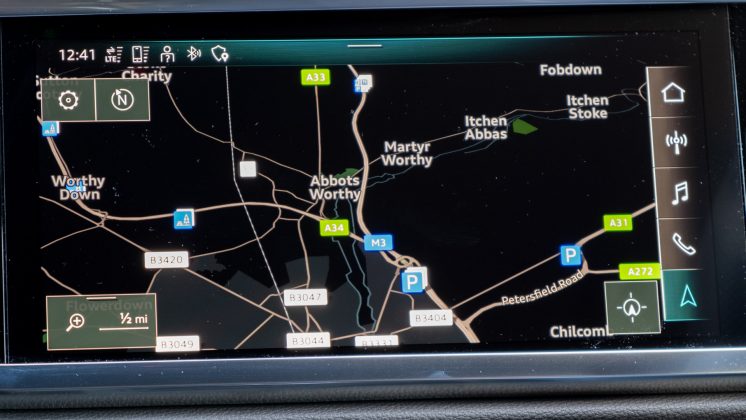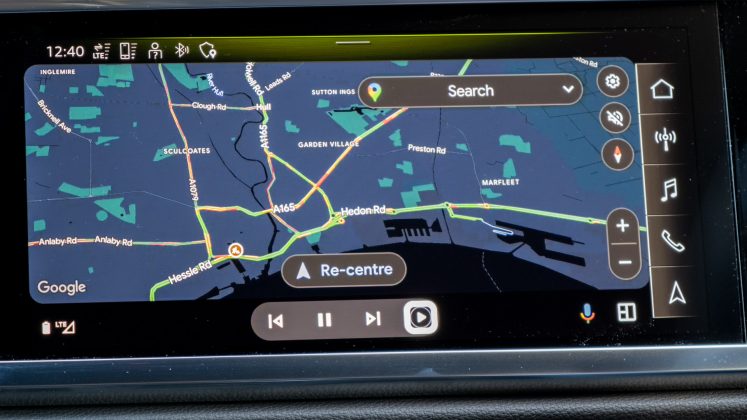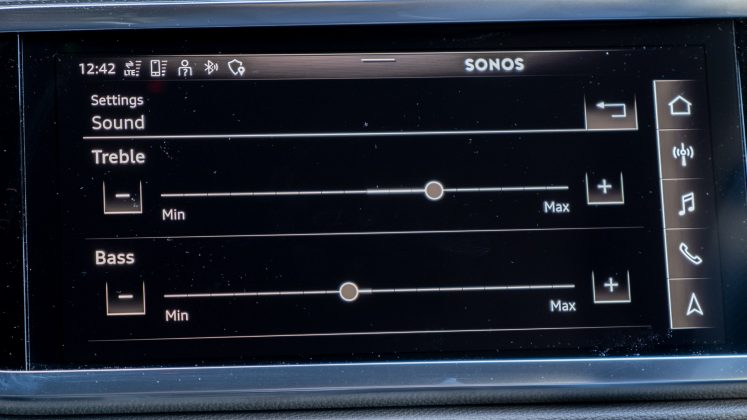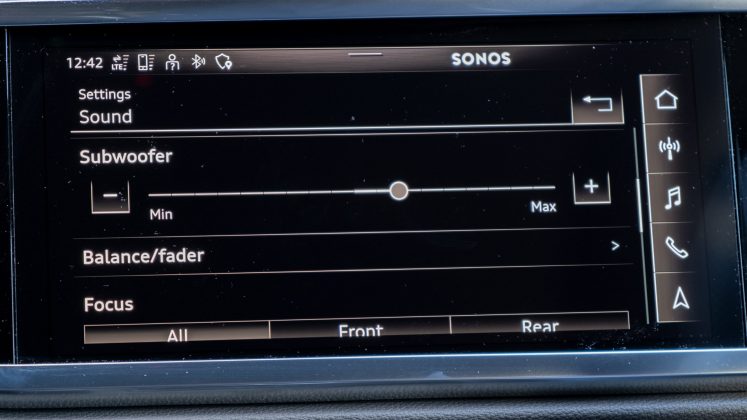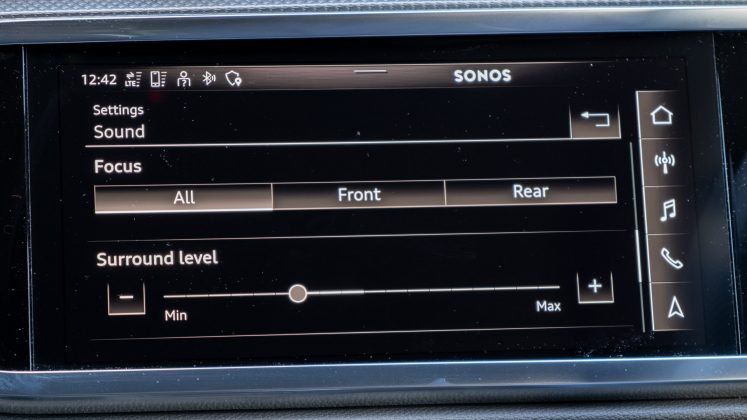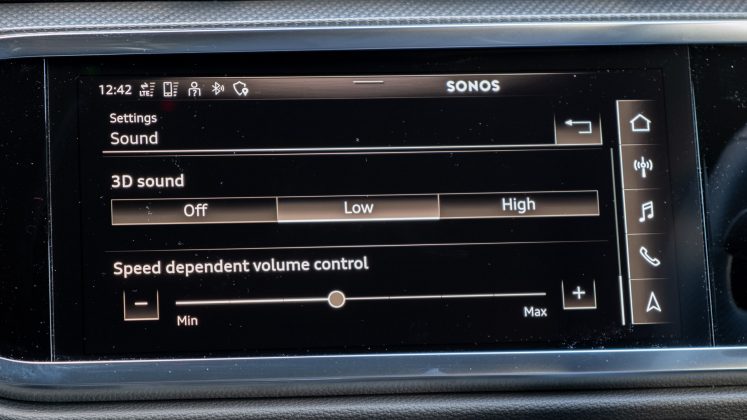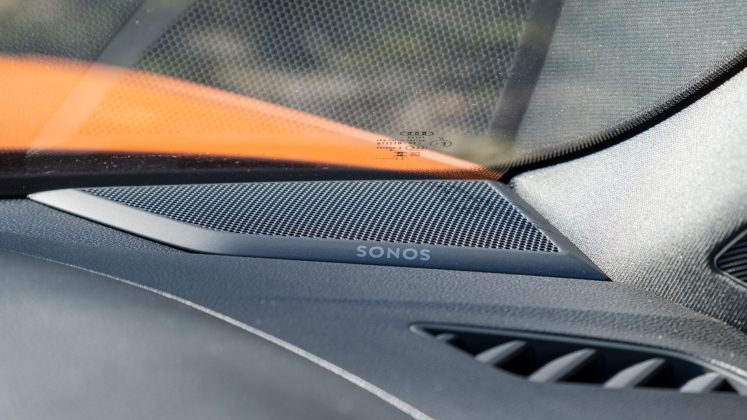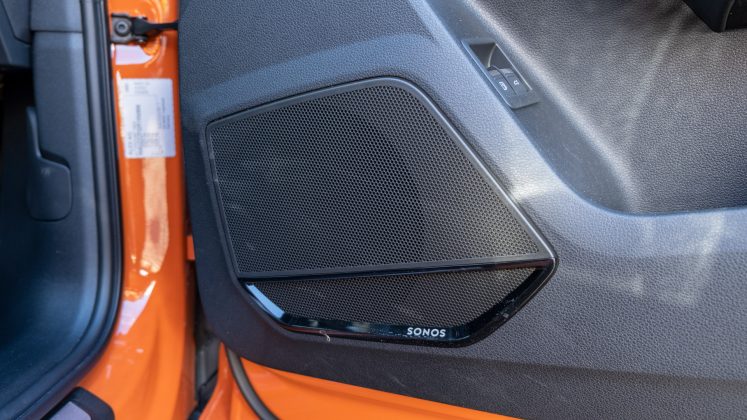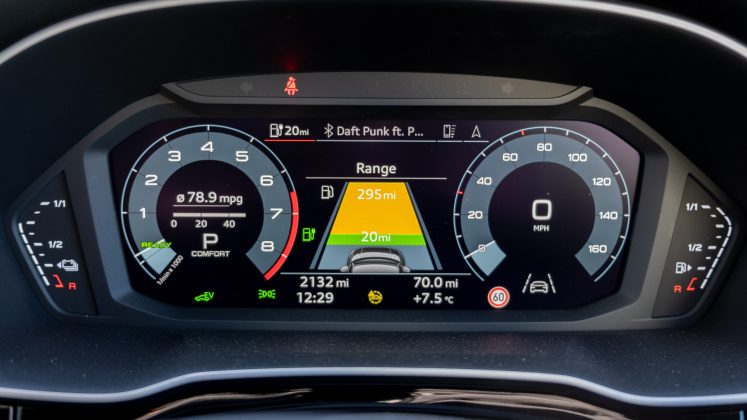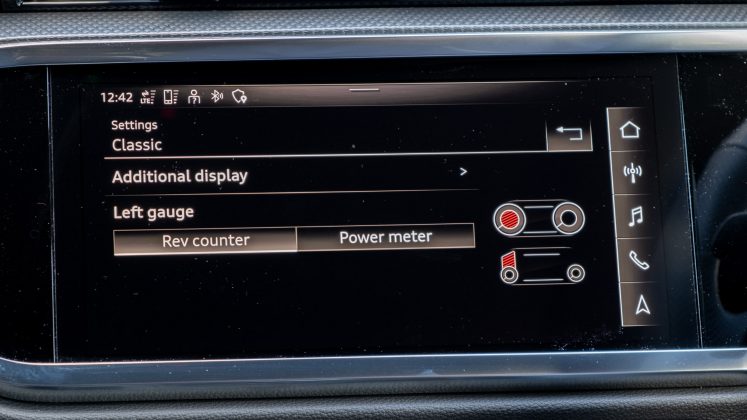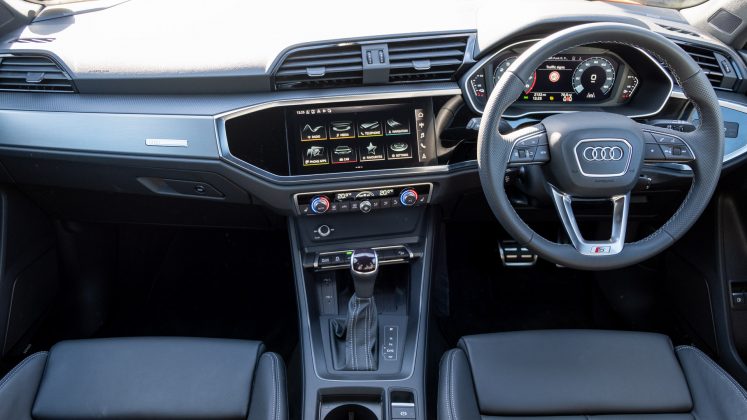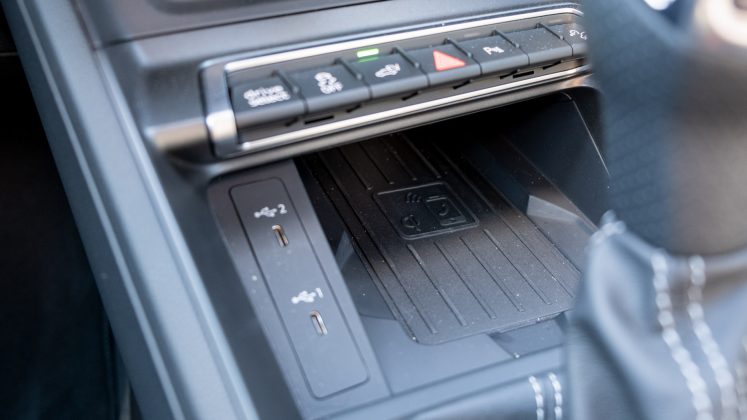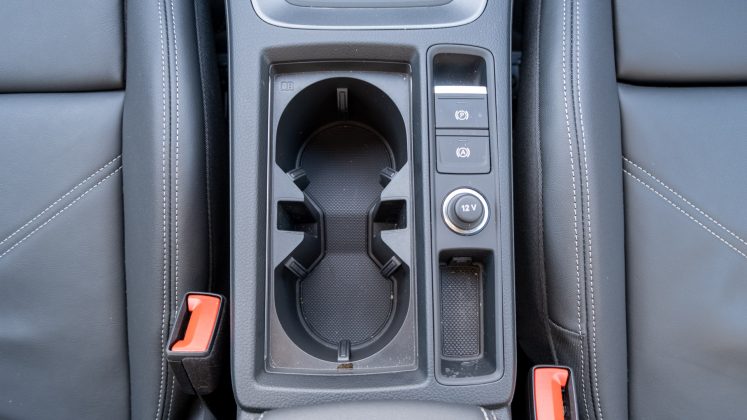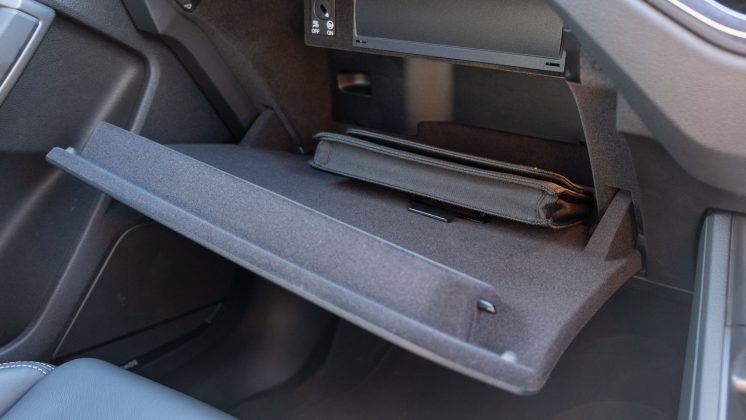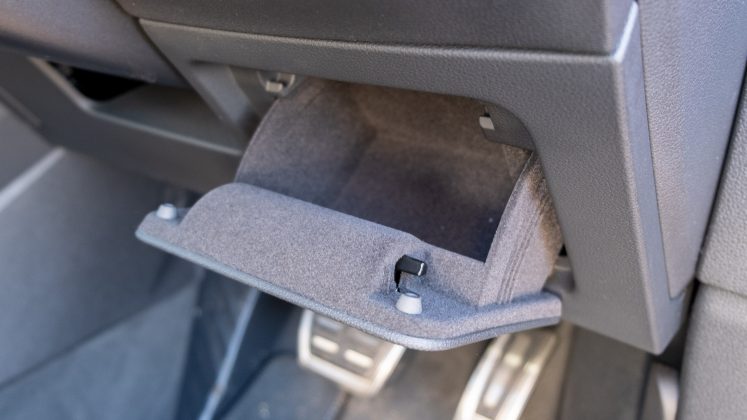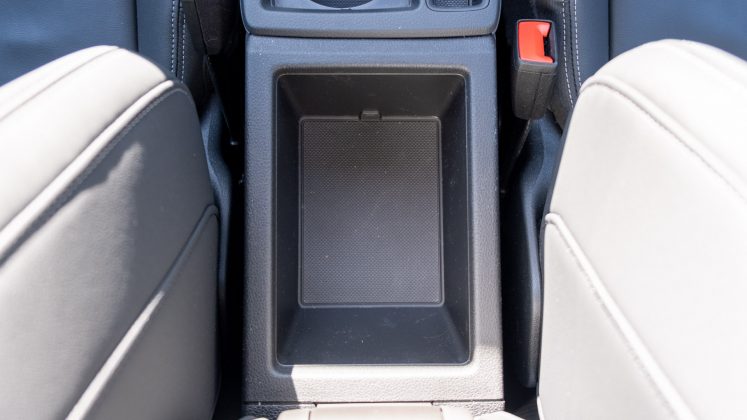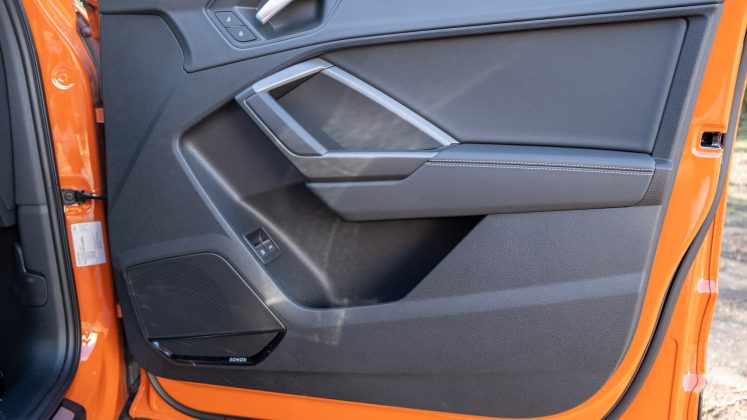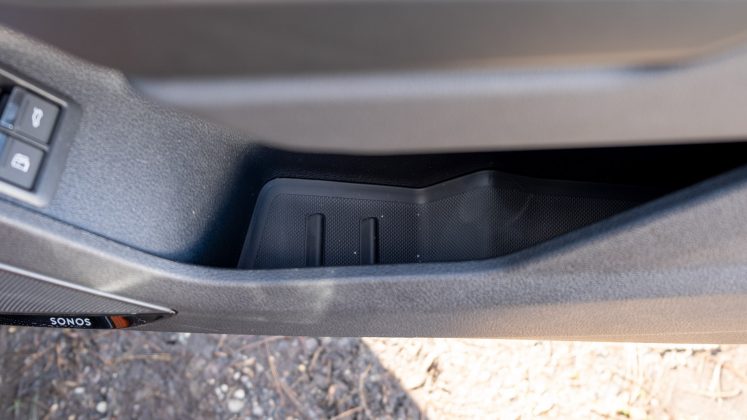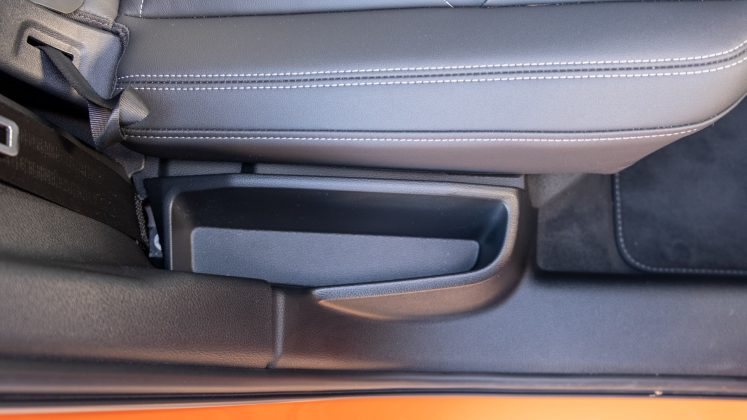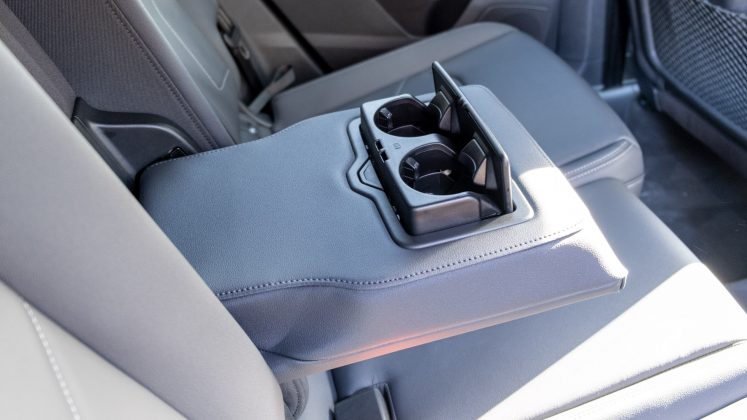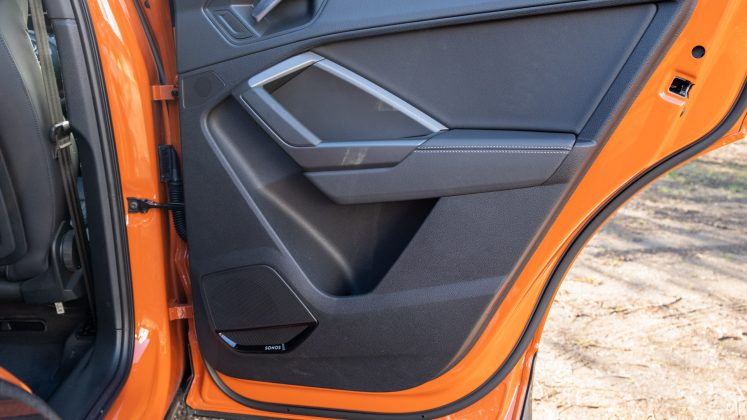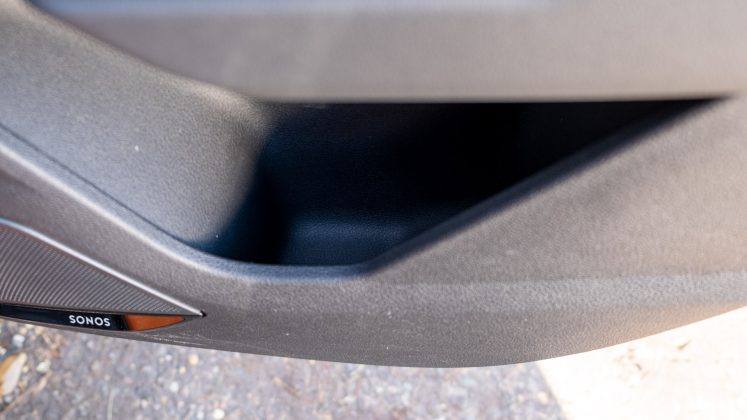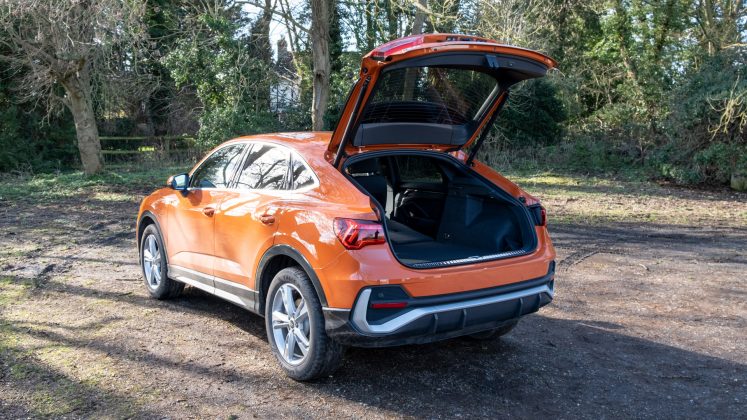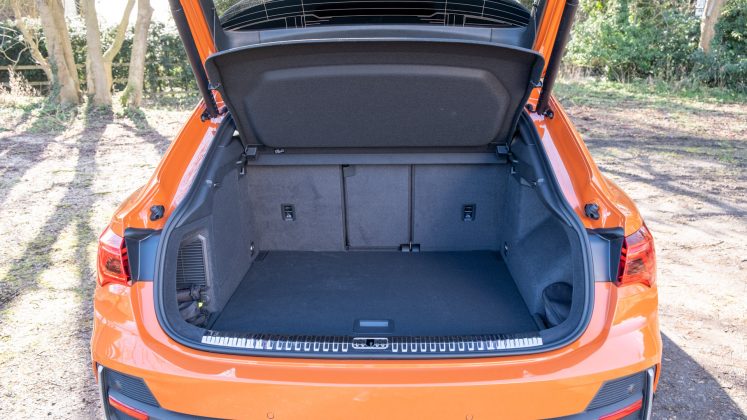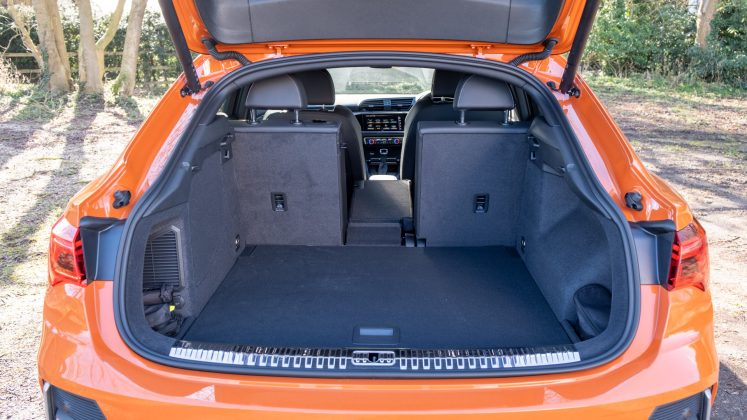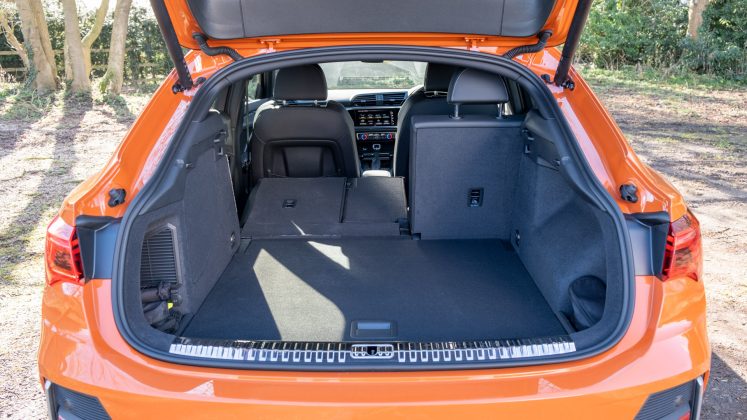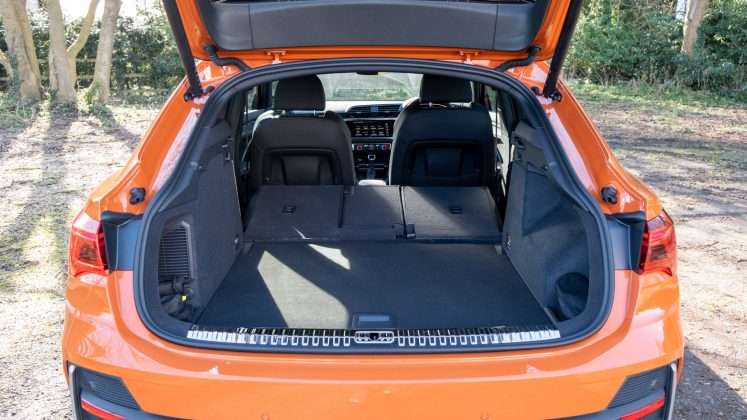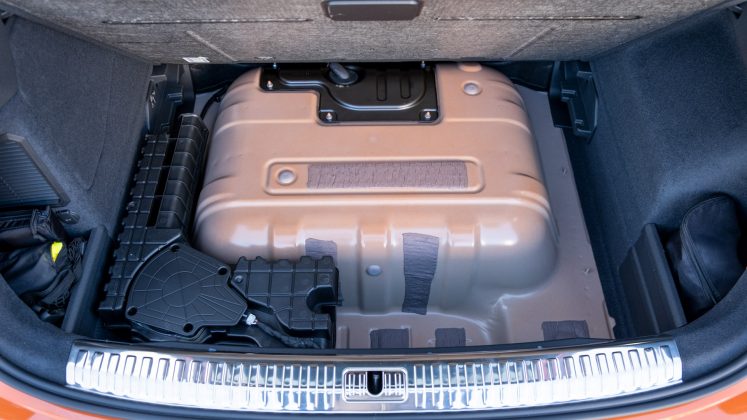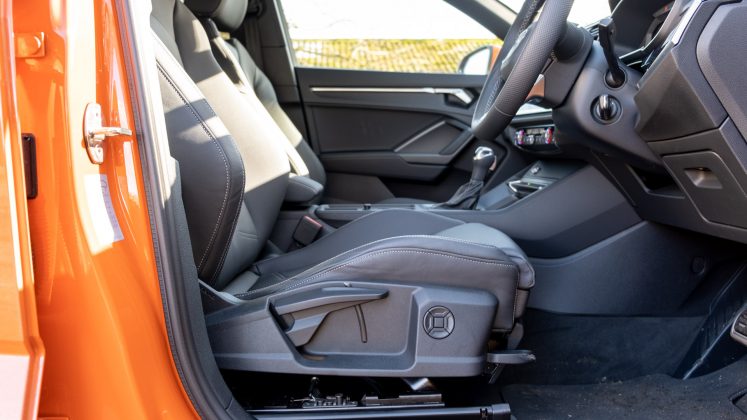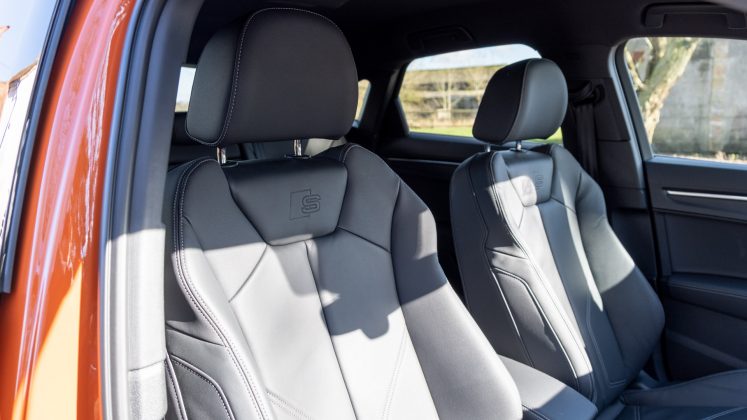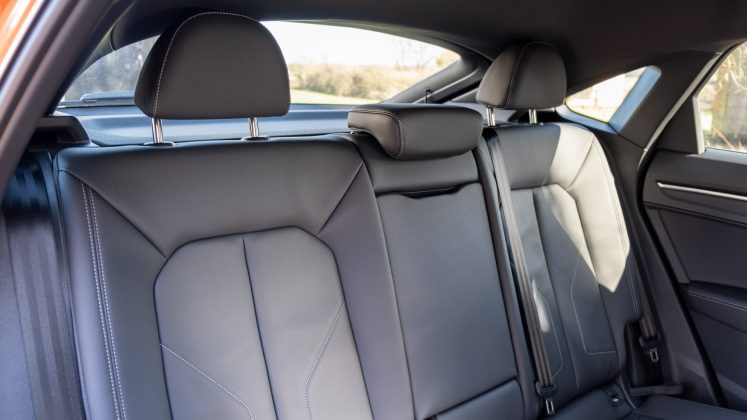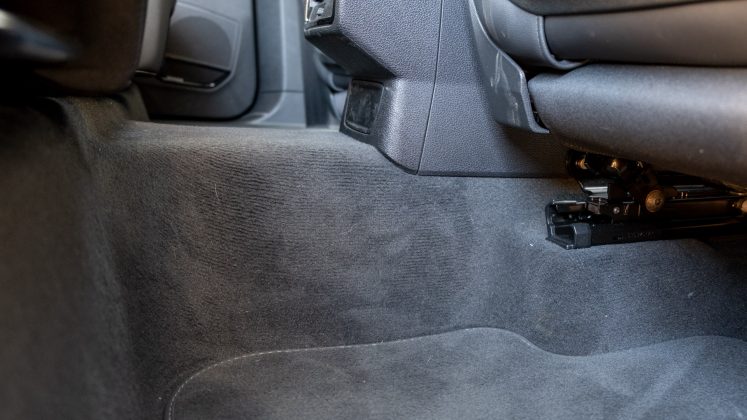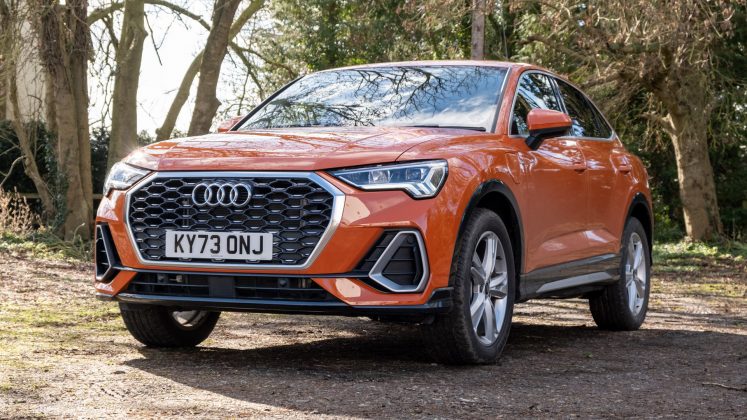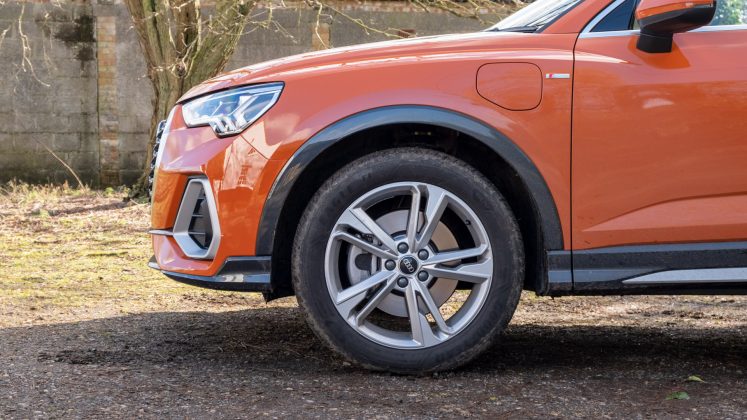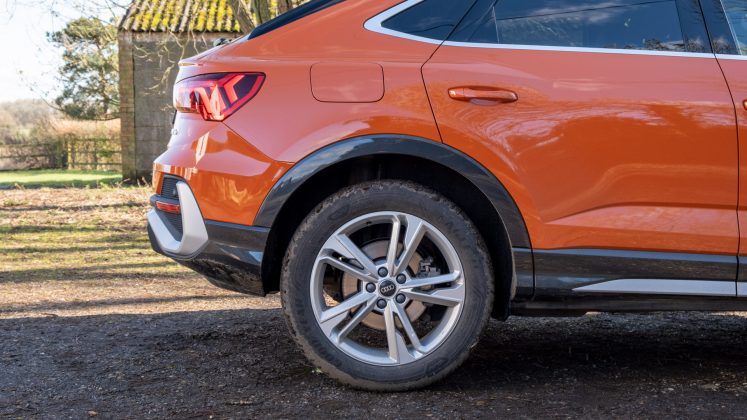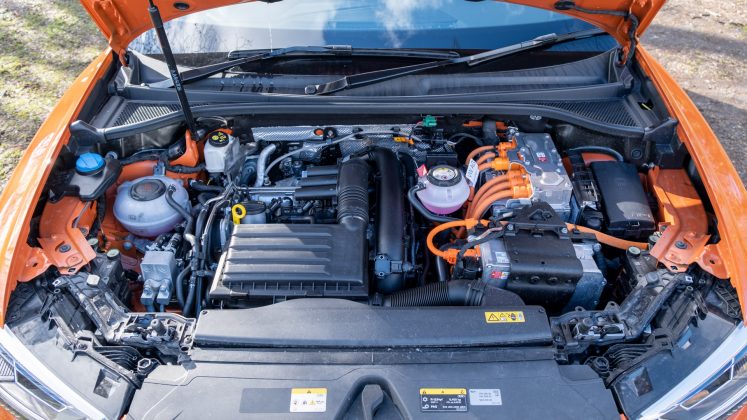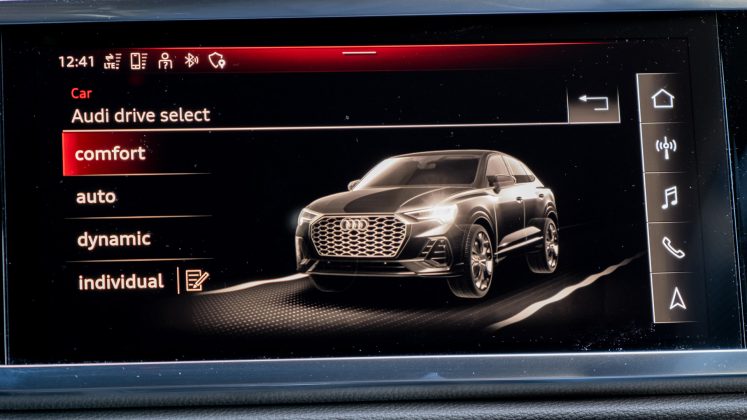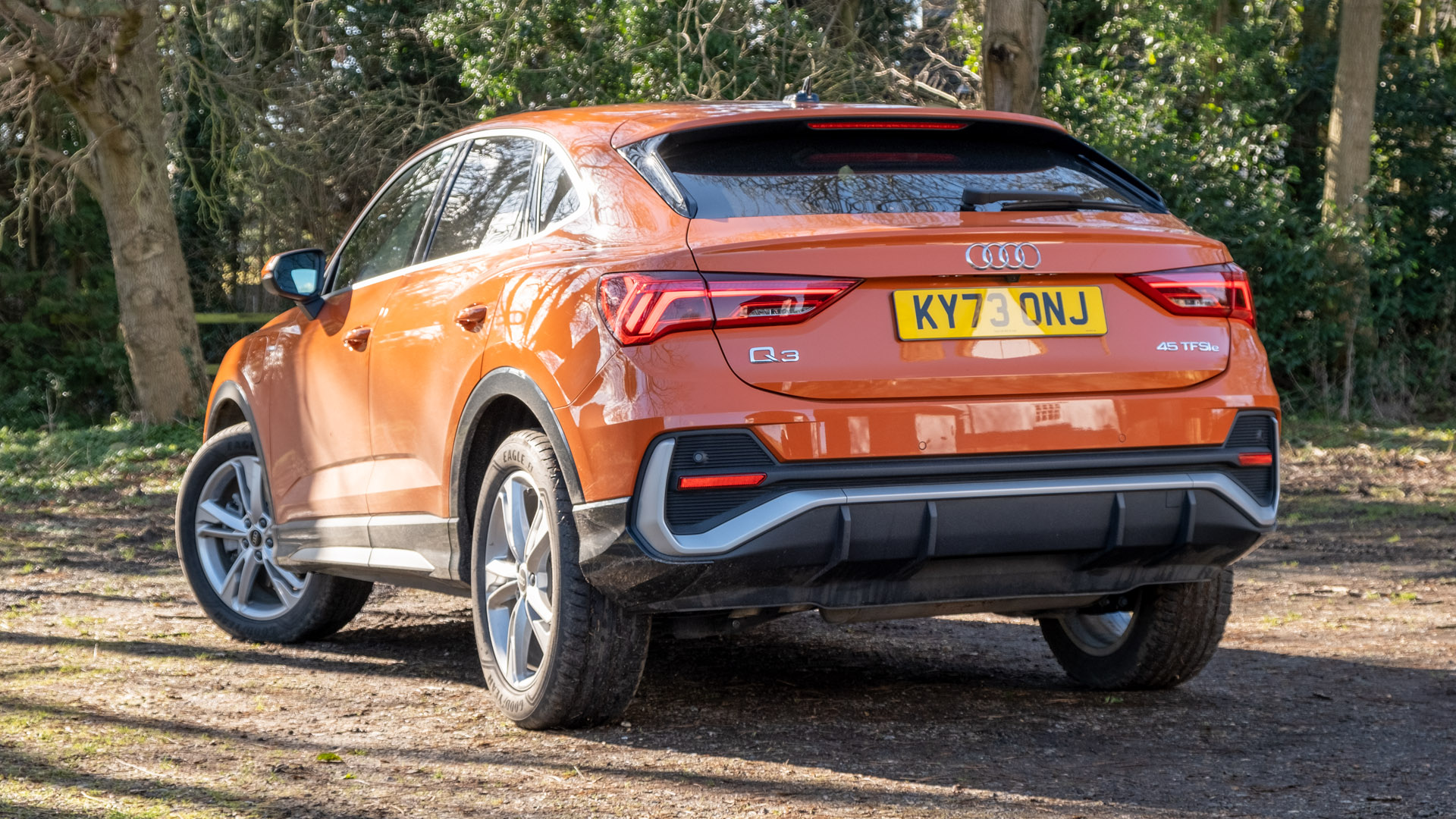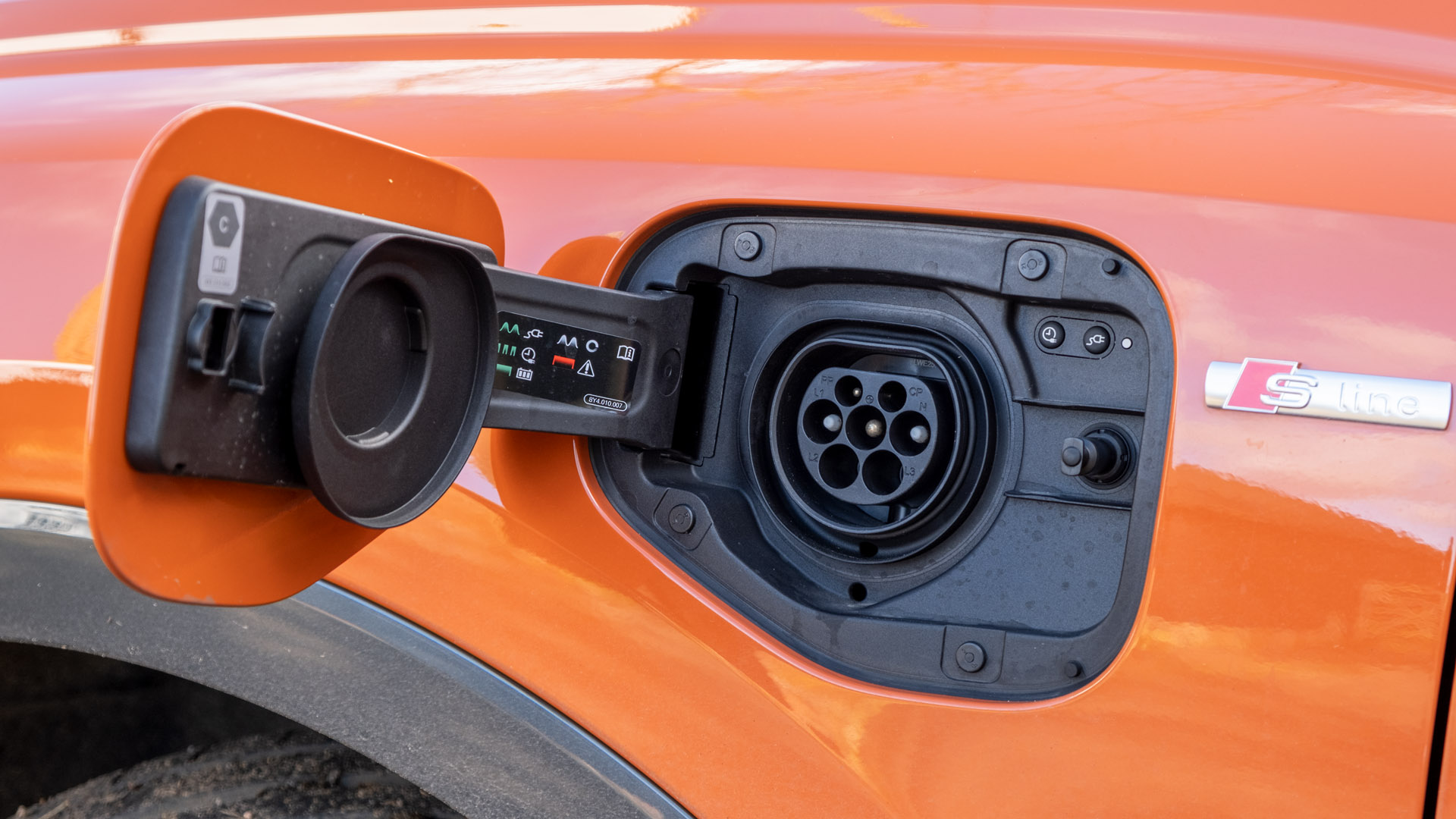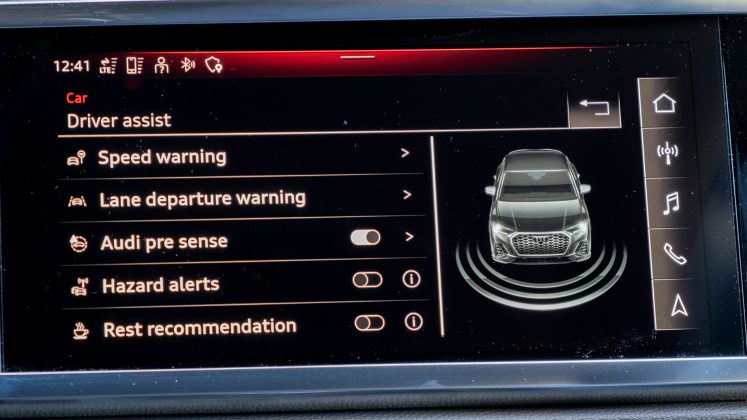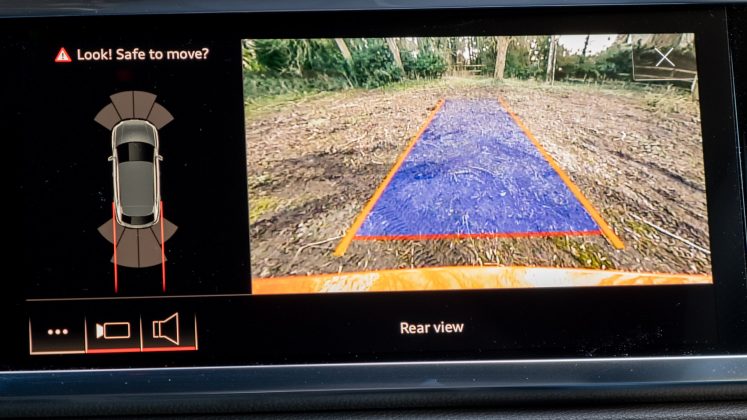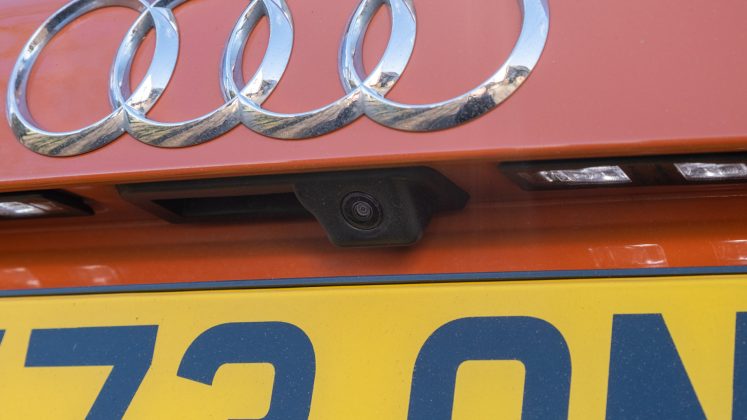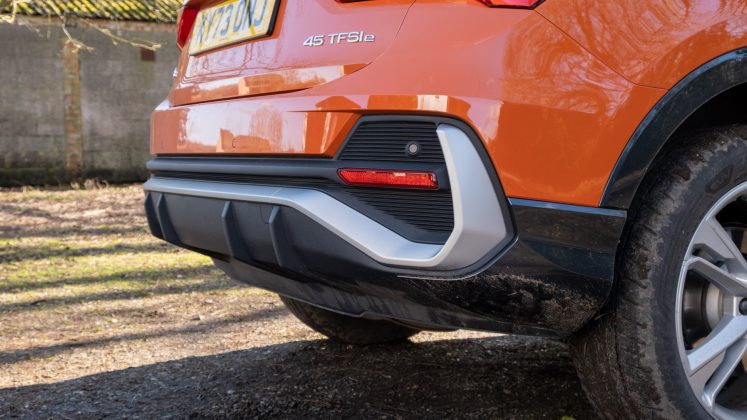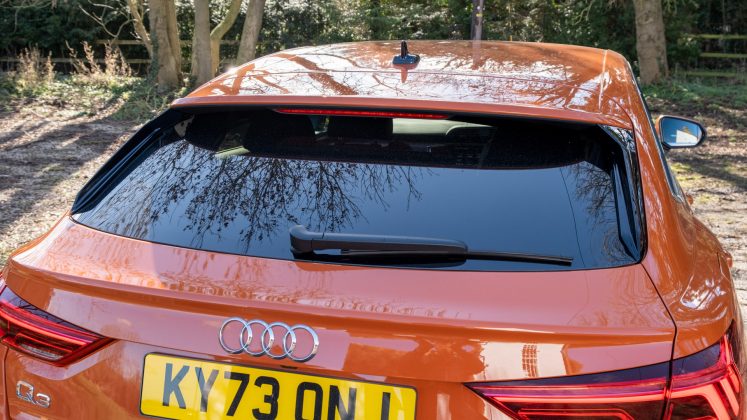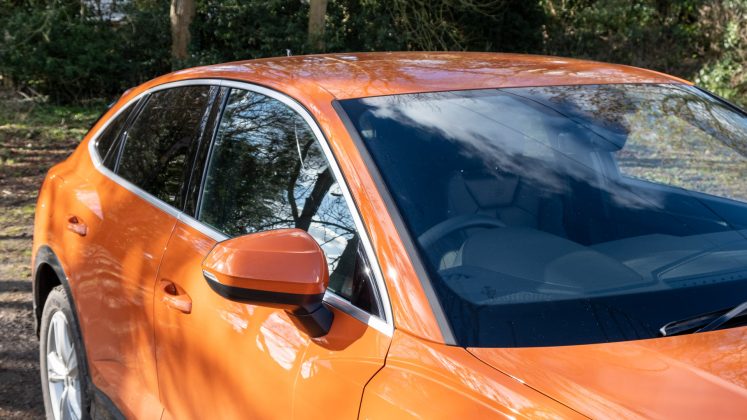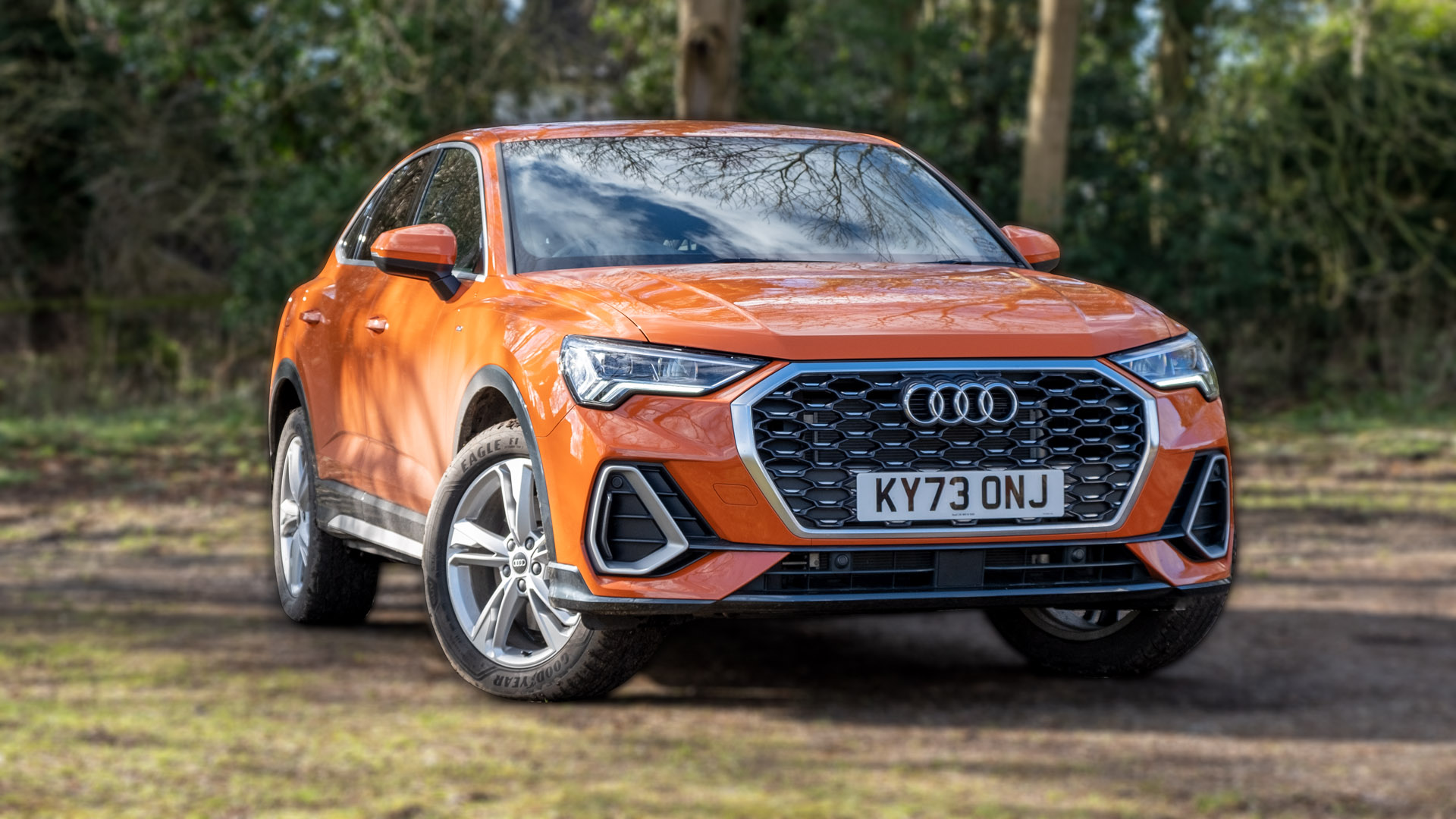The Audi Q3 has been around since 2011 and is a popular vehicle among consumers. It’s stylish, practical and bears the Audi badge. Now in its second generation, the SUV is available as a plug-in hybrid (PHEV), which makes it appealing for those doing shorter commutes or purchasing it under a company car scheme.
If you’d prefer to watch a review of the Audi Q3 TFSI e, head on over to our YouTube channel.
Audi Q3 TFSI e price & competition
At the time of writing and in the UK, there are two models available: the S line 45 TFSI e from £44,550 and the Black Edition 45 TFSI e from £46,600. Indeed, that’s a bit of a premium over the non-hybrid entry-level Q3, which starts from £34,465. The petrol-only S line 45 TFSI starts from £44,115, but this has a much more powerful engine and an all-wheel drive configuration.
As for the competition, there are a few hybrid SUVs to consider: the Nissan Juke Hybrid from £27,250; Honda HR-V from £30,695; MG HS PHEV from £31,095; Nissan Qashqai e-Power from £34,020; Peugeot 3008 Hybrid from £34,180; Citroen C5 Aircross from £36,875; Nissan X-Trail e-Power from £36,965; Citroen C5 X Hybrid from £38,220; Cupra Formentor e-Hybrid from £39,895; Peugeot 408 Hybrid from £40,450; Kia Sportage PHEV from £40,545; Ford Kuga PHEV from £40,555; Hyundai Tucson PHEV from £41,930; Range Rover Evoque P300e PHEV £49,000; Suzuki Across Hybrid from £49,529; Audi Q5 TFSIe from £55,105; and the BMW X3 xDrive30e from £56,515.
Buy a car phone mount on Amazon (Affiliate)
You might also want to consider pure electric SUVs, such as: the Fiat 600e from £29,995; MG ZS EV from £30,495; Citroen e-C4 from £30,569; Citroen e-C4 X from £31,610; Kia Soul EV from £32,875; Hyundai Kona Electric from £34,995; Jeep Avenger from £35,700; Peugeot e-2008 from £36,500; Kia Niro EV ‘2 64’ from £37,325; Vauxhall Mokka-e from £37,610; Skoda Enyaq iV from £40,585; Volkswagen ID.4 from £42,640; Hyundai Ioniq 5 from £43,445; BMW iX1 from £44,560; Tesla Model Y from £44,990; Kia EV6 from £45,275; and the Audi Q4 40 e-tron from £50,745. You’ve also got the MG5 EV, an all-electric estate that starts from £30,995, and the Smart #1, a crossover that starts from £31,950.
Read next: Kia Sportage review: Better than Hyundai Tucson?
Audi Q3 TFSI e exterior review
From the exterior, the Q3 looks the part. It has aggressive styling thanks to its accentuated headlights and front grille. Its side profile has 19″ alloys that come as standard, but you can opt for different-styled 19″ rims for £150 or splash out £1,450 on 20″ wheels instead. It’s a shame that the wheel arches and side skirts aren’t body-coloured, but given they don’t protrude too much from the vehicle’s shell they blend in with the overall design. At the rear, stylish taillights and an integrated spoiler give it a sporty look.
For your colour options, it comes as standard in white but is available in a metallic, pearl or the pictured solid Pulse Orange for an additional £575. Premium and special paints will set you back a whopping £2,600. Elsewhere, the Q3’s roof capacity is rated at 75kg while towing sits at 750kg for unbraked trailers and an impressive 1,400-1,700kg for braked trailers.
Read next: Cupra Formentor e-Hybrid review: Better than BMW X2?
Audi Q3 TFSI e interior review
Step inside, and you’ll find the Q3 still retains that premium look and feel; from the stitching work on the upholstery and steering wheel to the door cards. Truthfully, it’s something you’d expect from the premium German automaker.
What is a refreshing surprise, however, is the use of physical buttons and dials. You’ll find them on the steering wheel, centre console and dashboard; there are even dedicated climate controls, making it intuitive to adjust while on the move, which isn’t the same that could be said about some of its competitors.
That’s not to say the Q3 is technology-impaired as the 10.1″ display, which is planted at a slight angle at the centre of the dashboard, is extremely responsive and makes for easy navigation thanks to Audi’s Multi Media Interface (MMI). Better still, there’s support for Android Auto and Apple CarPlay over both a wired and wireless connection.
It is a shame, however, that these third-party operating systems don’t feed through navigation data to the 10.25″ fully digitalized instrument cluster; the built-in sat nav will work. The driver’s display itself is somewhat customisable and provides all the key driving information that you’ll require. Unfortunately, a Head-Up Display (HUD) isn’t available as an option.
Thankfully, one can upgrade the stock six-speaker system to a punchy 15-speaker Sonos configuration that outputs 680 Watts of power. Despite it only being available within the £1,395 Technology Pack, it’s still recommended for those who want some extra oomph from their music. If you’d like to hear how it sounds, watch our dedicated review of the audio system on YouTube.
Audi Q3 TFSI e storage review
Another item locked within the Technology Pack is the wireless smartphone charger, which is ridiculous in this modern era. Thankfully, storage hasn’t been hampered with the glove box optimised for right-hand drive vehicles, two cupholders and a small storage bay by the centre console. There’s also a compact centre armrest compartment – the armrest itself can slide back and forth.
At the front of the centre console you’ll find two USB Type-C ports, which can be used to connect up a smartphone to the infotainment system and also simultaneously charge the device. As for the door bins, the front two are large enough to accommodate a 500ml bottle, while the rear two are unsurprisingly limited. It’s great to see that the front door bins are lined in a non-slip material, which means that loose change or keys won’t be heard rattling around. At the rear of the cabin, you’ll find small storage areas located next to the rear outer seats and two cupholders concealed within the pulldown armrest compartment.
When it comes to its boot, there’s 380 litres with the seats in place and 1,375 litres with them propped down; it should suffice for your weekly shops but won’t compete with some of its electric-powered rivals.
To put these figures into perspective here’s a selection of other SUVs: Land Rover Discovery Sport P300e (1,179/1,794 litres); Tesla Model Y (854/2,100 litres); Honda CR-V e:PHEV (635/1,728 litres); Skoda Enyaq iV (585/1,710 litres); Honda CR-V e:HEV (586/1,642 litres); VW ID.4 (543/1,575 litres); Hyundai Ioniq 5 (520/1,587 litres); Skoda Octavia iV Estate (490/1,555 litres); Citroen C5 X Hybrid (485/1,580 litres); Peugeot 408 Hybrid (485/1,545 litres); Citroen C5 Aircross (460/1,510 litres); Nissan X-Trail (485-575/1,298-1,386); Kia EV6 (490/1,300 litres); MG ZS EV (448/1,375 litres); Peugeot e-2008 (434/1,467 litres); Range Rover Evoque P300e (591/1,383 litres); Nissan Qashqai e-Power (455/1,379 litres); Kia Soul EV (315/1,339 litres); Cupra Formentor e-Hybrid (345/1,475 litres); Suzuki Across Hybrid (490/1,168 litres); Citroen e-C4 (380/1,250 litres); BMW X2 xDrive 25e (410/1,290 litres); Honda ZR-V (370/1,301 litres); Nissan Juke Hybrid (354/1,237 litres); Honda HR-V (320/1,290 litres); Hyundai Kona Electric (332/1,114 litres); Vauxhall Mokka-e (310/1,060 litres). As for the MG5 EV estate, it offers 479 and 1,367 litres, respectively.
In terms of practicality, there’s a small underfloor compartment, 40:20:40 split-folding rear seats, a flat loading bay and a wide-opening electric tailgate with a hatchback design. A few minor complaints, however: the boot load cover won’t fit in the underfloor compartment, so will have to take up space in the boot or be left at home, and the rear seats can only be dropped down using a release that is found within the cabin, making it less convenient if you’re frequenting the boot.
Read next: Audi Q8 e-tron review: An upgraded electric SUV
Audi Q3 TFSI e comfort review
Past storage, the Q3 has comfortable and accommodating seats. However, the front two are limited to manual controls with a four-way electric lumbar support only. Should you want heated front seats, you’ll have to splash out on the £1,395 Technology Pack, while electronic seats and a panoramic glass roof are comprised within the eye-watering £3,895 Technology Pack Pro only. Truly extraordinary, as some of these features come included as standard in much cheaper alternatives.
Nonetheless, headroom and legroom are a non-issue for 6-foot 2-inches (188cm) individuals. Indeed, even at the rear, the Q3 is spacious for adults. The only exception is the rear middle seat, which has a bit more limited headroom and a transmission tunnel that eats up legroom.
As for cabin noise, the Q3 TFSI e has good noise insulation; road noise from the tyres is minimal and there’s very little wind that can be heard deflecting off the A-pillars or wing mirrors.
Read next: Citroen C5 X review: Hybrid perfection?
Audi Q3 TFSI e performance review
This brings us to the overall driving comfort, which has been tuned to perfection by Audi. Here, the Q3 TFSI e has MacPherson struts at the front and a four-link axle system at the rear. The combination yields a comfortable experience on both country roads and inner-city commutes. Granted, it won’t compete with vehicles that have adaptive air system systems or more advanced configurations, such as the Citroen C5 X or the finely tuned Audi Q8 e-tron, but it still does a tremendous job of masking those nasty potholes and speed bumps.
Better still, the Q3 stays composed on winding roads, with body roll kept down to a minimum. The same could be said about the overall driver’s feel, which gives you a great sense of connection with the front axle. It’s certainly fun to drive and will provide many with a gripping feel. Make no mistake, however, it won’t quite compete with sportier SUVs, which provide a heightened experience in this department.
Buy a car phone mount on Amazon (Affiliate)
Speaking of which, the Q3 45 TFSI e houses a 1.4-litre four-cylinder petrol engine at the front and a 13 kWh (10.4 kWh net) battery pack. Combined they drive the front wheels only to output a maximum of 180 kW of power (241 hp) and 400 Nm of torque. In EV mode, you’ll be limited to 85 kW of power (114 hp) and 330 Nm of torque. We had it tested using Racelogic’s Performance Box Touch from 0-20mph in 2.76 seconds, 0-30mph in 3.66 seconds, 0-60 mph in 7.52 seconds, 50-70 mph in 3.1 seconds and recorded a peak acceleration of 0.58g. Top speed is limited to 130.5mph, while it’ll get up to 87mph in EV mode.
Indeed, the hybrid Q3 is pretty punchy and its dual-clutch six-speed S Tronic gearbox provides a buttery smooth experience. You won’t hear or feel the gear changes, which isn’t the same that could be said about some of its competitors. Should you prefer to be in control, you can adjust it by flicking the gear selector to the left.
Equally, the transition between pure electric and petrol power is indistinguishable – it’s relaxing to drive and doesn’t hamper the rest of the vehicle’s traits. Of course, you will be able to hear the engine go quiet or glance at your instrument cluster to notice that the engine isn’t ticking away. We should also state that if you were to initiate a kick-down, the engine does rev to around 5,000-6,000 RPM, making for a bit of a racket.
Unfortunately, it’s not all rosy, as the Q3 plug-in hybrid operates on a front-wheel drive (FWD) configuration only. It lacks the traction of some of its rivals that have an all-wheel drive AWD system, and doesn’t instill the utmost confidence when driven at speed on wet tarmac.
Our biggest issue is efficiency. This stems from the vehicle’s rather measly claim of running for 31 miles on pure electric power. In reality, expect to attain 25 miles from its 13 kWh (10.4 kWh net) battery pack. Indeed, the Q3 can be driven in a pure electric or hybrid mode; you can even choose to conserve or charge the battery pack while on the move, which can be handy in certain situations.
Its lacklustre electric range, especially when pitted against its rivals, affects fuel efficiency too. Somehow, the automaker provides a ridiculous WLTP combined MPG of 176.6 (Technik) or 148.7 (S line, Black Edition). In our mixed driving tests, which involve motorways, country roads and city routes, we netted a disappointingly low 35-40 MPG.
To put this figure into perspective, here’s how it stacks up to some of the other vehicles that we’ve tested: the Citroen C5 X Hybrid and Peugeot 408 Hybrid attained 70-75 MPG, the Cupra Formentor e-Hybrid 64 MPG, the VW Passat Estate GTE 60-65 MPG, Kia Sportage PHEV 60-65 MPG, the Citroen C5 Aircross Hybrid 58 MPG, the Suzuki Across Hybrid 55-61 MPG, the Skoda Octavia iV Estate and Honda HR-V 55 MPG, the Honda CR-V e:PHEV 50-55 MPG, the Nissan Qashqai e-Power 50-53 MPG, the Honda CR-V e:HEV 45-50 MPG, the MG HS PHEV and Honda ZR-V 40-45 MPG, the Hyundai Tucson PHEV 42.7 MPG, the Nissan X-Trail 42.6 MPG, the Range Rover Evoque P300e 40 MPG, the BMW X2 xDrive 25e 39 MPG, the Nissan Juke Hybrid 35-40 MPG, the Jeep Renegade 4xe attained 36 MPG and the Land Rover Discovery Sport P300e just 35 MPG.
As you’ll be able to note from the above, the Audi Q3 TFSI e sits towards the bottom end of the scale, which is disappointing for both a premium vehicle and one that has the Audi badge. We expected far better fuel efficiency from the automaker, especially considering our experiences with the smaller Audi A3 TFSI e and its sibling the Seat Loan e-Hybrid were positive – both attained north of 55 MPG.
Granted, if you can plug in the Q3 regularly, then you will be able to attain better fuel efficiency as petrol won’t be required. So, the hybrid Q3 should still be a consideration if you’re contemplating between models.
However, its onboard charger is limited to 3.6 kW. This means that you’ll need to spend four hours sitting at a charger after you’ve depleted its 25-mile battery pack – that works out at 6.25 miles per hour. Some competitors offer a 7 kW onboard charger, which allows for a rapid charge and ultimately further promotes driving in EV mode.
Read next: BMW iX1 review: The best driver’s feel
Audi Q3 TFSI e safety review
When it comes to safety, the regular Audi Q3 was tested by Euro NCAP in 2018 – it scored 5/5 stars in the rigorous crash tests, scoring 95% in Adult Occupancy, 86% in Child Occupancy and 76% in Safety Assist. Note, that this rating isn’t valid for the hybrid Q3 that we have on review, but one can only imagine that it will fair similarly.
What we can affirm are the driver assistance systems, which are rather limited. As standard, you have the following: Audi Pre Sense Basic, Pre-Sense Front with pedestrian and cyclist detection, Camera-based traffic sign recognition, Cruise Control with Speed Limiter and Lane Departure Warning. The latter can be easily disabled by pressing a button on the left stalk. Great thinking by the manufacturer, as it’s enabled each time you power on the vehicle and can be quite cumbersome on the country roads.
Should you want High-beam assist, Adaptive Cruise Assist, Emergency assist, Cross Traffic Assist Rear, and Audi Side Assist (blind spot monitoring), you’ll need to spend an extra £800 on the Driver Assistance Pack. Rather disappointing as one might have expected these all to come as standard.
Speaking of which, it’s ridiculous that the rearview camera is only available with the £1,395 Technology Pack added on; while 360-degree cameras are found within the £3,895 Technology Pack Pro option. Again, considering the price of the Q3, it’s inexcusable.
Nonetheless, the SUV is easy to manoeuvre with its 11.8-meter turning circle and good visibility at the front, side and rear. A rear wiper and parking sensors come fitted as standard.
Read next: New Honda HR-V review: Best hybrid SUV?
TotallyEV’s verdict on the Audi Q3 TFSI e
On the whole, the Audi Q3 TFSI e is a comfortable, practical and fun-to-drive SUV. However, its hybrid powertrain leaves much to be desired with a lacklustre efficiency and electric range. It’s also starved of features and hasn’t got a unique selling point over some of its rivals.
Therefore, we’d suggest looking elsewhere, unless of course you’re set on getting the Q3. Consider the PHEV model only if you have a means of regularly charging and do short commutes.
What do you make of the hybrid Q3? Let us know in the comments section below or via social media; we’re on: YouTube, Instagram, Facebook, X and LinkedIn.

